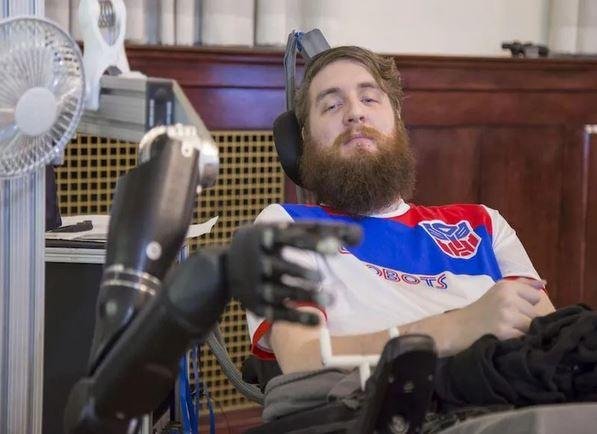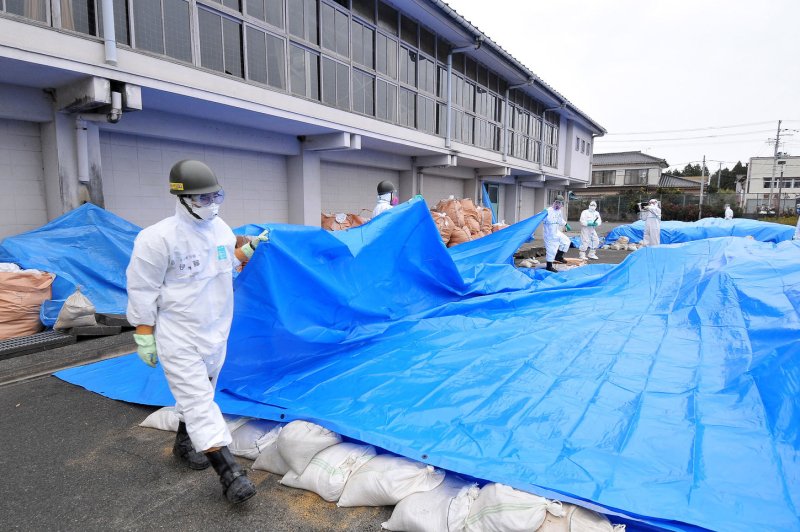Colombians held in Haitian president’s murder claim ties to Florida security firm
2021/7/10
©Miami Herald

VALERIE BAERISWYL/AFP/AFP/TNS
MIAMI — The Miami area is looming ever larger as investigators question the men held in the plot to assassinate Haitian President Jovenel Moïse.
Seventeen Colombians and two Haitian Americans from South Florida are in custody in Haiti. A person who interviewed the detained Colombians in Haiti told the Miami Herald that the men claimed to have been recruited to do work in Haiti by an under-the-radar firm in Doral called CTU Security. It is run by a Venezuelan émigré, Antonio Enmanuel Intriago Valera.
The Miami Herald visited the company’s offices on Thursday, where a doorbell rang to a phone, and a man declined to discuss the events in Haiti. He did not return phone calls, texts or emails asking about reports of involvement in the monumental developments gripping Haiti. No one answered on Saturday.
Multiple sources in Haiti, requesting anonymity for their safety, have confirmed to the Herald that the detained men said they were hired by CTU, and several of the men indicated they had been in Haiti for at least three months, some longer. It is unclear if they knew or believed CTU leaders were aware of the assassination plot.
The men were hired to provide VIP security, one source in Haiti said, and were paid about $3,000 a month. The two Haitian Americans — previously reported to be James Solages, 35, and Vincent Joseph, 55 — told a judge that they were hired as translators but did not reveal who their employer was, Judge Clément Noël told the Miami Herald.
Solages worked as a maintenance director at a senior-living center in Lantana until this past April 12. Little is known about the other man but documents obtained Saturday show his name may have been reversed in the Haitian proceedings and that it is really Joseph Gertand Vincent. His sparse public footprint shows he was indicted in 1999 for making a false statement on a passport application and given probation.
In another Florida-related development, interim Haitian police director Leon Charles in an interview said that with the help of Colombian authorities now in Haiti the investigation is “moving fast to get some more groups who played a role as the intellectual authors.”
He said the suspects, including the Haitian Americans, confirmed that they worked for a company “based in the U.S .and Colombia. They worked with the two Haitian Americans and a high-profile doctor here.”
Those versions square with what family members of captured Colombians are now saying.
The Colombian station W Radio featured an interview Friday with the wife of captured security man Francisco Uribe, who said he’d been hired by CTU, paid $2,700 and provided travel to the Dominican Republic to work as private security for powerful families. (The Washington Post reported Saturday that Uribe has been under investigation for extrajudicial killings when he was a Colombian soldier.)
Also on Saturday, W Radio interviewed Yenni Capador, sister of another Colombian, Duberney Capador Giraldo, who retired from the army in 2019 and was reported killed this past week in Haiti in a police raid.
The “hypothesis we are all working is that it went wrong and they are unjustly accused of something that my brother did not do,” she told the media outlet. “He lived with his mother and we know he was hired to work with a security company.”
Intriago’s CTU is formally registered as the Counter Terrorist Unit Federal Academy LLC, and was incorporated in Florida in 2019 under his name, and it has filed annual reports in the two successive years. It lists a member named Arcangel Pretel Ortiz, who had run a now-defunct security firm of his own called Taktical Consulting Corp.
Florida licensing records show Intriago is authorized by the state to provide security services and to carry a firearm. He has little other footprint in public records except for a detainer filed against him in 2011. He has several eviction complaints filed by landlords against his company over the years.
Intriago has a website that shows him as a wholesaler and retailer of security equipment.
“As a representative for big and important security and safety device manufacturers around the world our objective is to offer first-class personalized products and services to law enforcement and military units, as well as industrial customers,” the company says in its About Us section.
Known in Venezuelan expat circles in South Florida, Intriago would boast of his police background in the South American country. At times, said one who knew him but did not want to be identified in the widening story, Intriago claimed to have connections to or to have worked directly for U.S. agencies.
A person claiming to have known him back in Venezuela said Intriago worked out of a small Doral office, where he would boast of being a paid mercenary and a coordinator of special forces, but most people did not take those claims seriously.
The source, who demanded anonymity to speak freely, said that Intriago is also known for providing firearms, firearms parts, and military and police equipment such as bulletproof vests.
Public records link him to a small, fenced three-bedroom residence a few blocks off of I-95 near Miami Northwestern High. Venezuela’s voter database shows he remains registered to vote there through the consulate in Miami.
Intriago’s Facebook page provides a bit of a timeline. It shows him appearing to arrive in the United States around 2009 and working initially with alarm systems. His social media presence is largely apolitical except for some postings against the Venezuelan government and one in support of Juan Guaidó, the Venezuelan lawmaker the Trump administration recognized as the oil-rich country’s legitimate leader.
Intriago’s security firm has a limited social media presence and does not appear to have won any federal contracts to provide security or training. His personal Facebook page shows that he offers personal security classes at night for people wanting to protect their families and pitches the services occasionally in posts.
On Saturday, a Herald reporter and photographer rang the doorbell of CTU’s storefront at 2510 NW 112th Ave., tucked in a beige, green and orange corporate office complex. The store, near the Dolphin Mall, had a cargo company, a CCTV camera store, a Realtor and a blinds warehouse nearby. The office unit had a white garage door in the back and a pickup truck parked out front with a CTU bumper sticker. No one answered the door.
A security guard sitting in a golf cart told the Herald that CTU hosts shooting range classes inside and those classes have people constantly coming in and out of the store. She said the company had a class as recently as last Thursday and added the black pickup with a Texas license plate is always parked out front.
At one of the company’s two other listed locations, the office headquarters on 53rd Street, Herald journalists knocked on the door of the listed suite number inside a white office building with black awnings. The suite was identified with a plaque that read Offix Solutions, which is owned by someone who appears to be unaffiliated with Intriago. No one answered the door.
Intriago and his now ex-wife owned a South Florida newspaper company Prensa Libre Newspaper Corp., which corporate records show existed between 2003 and 2009.
There is nothing in Intriago’s public footprint to indicate that he had either the money or the scope to train dozens of private soldiers to raid the private residence of the Haitian president and kill him.
What role Miami and Intriago played directly, or inadvertently, in the Haitian assassination will surely be investigated with the FBI. Haiti has asked for FBI help, in part because of the large number of businessmen and drug gangs that might have had an interest in getting rid of the president.
A team from Colombia is already in Port-au-Prince, dispatched on Friday to collaborate with the Haitian government on how the Colombians became involved in the assassination.
Miami and the Doral enclave have become sort of a Star Wars bar for would-be liberators and for-hire warriors.
A botched coup in May 2020 in Venezuela similarly involved for-hire security men in Florida and some of the plotting traced to the 12th fairway of the Red Course at the Doral resort.
———
(The Miami Herald's Monika Leal contributed to this report.)









